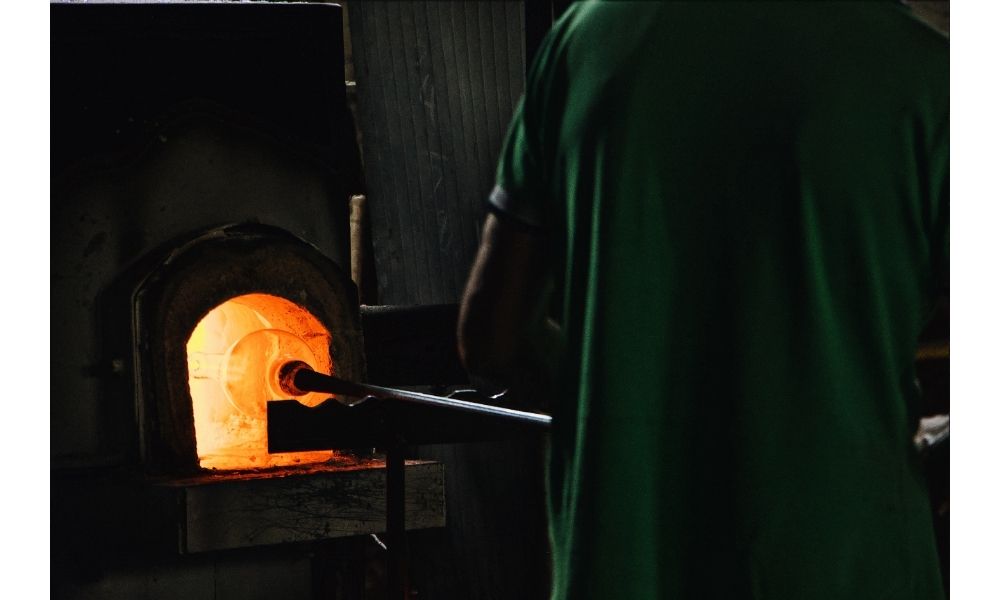During the 17th and 18th centuries, the tradition of cut crystal glass making spread throughout Europe and was particularly popular in England and France. In France, famous glass makers such as Baccarat and Lalique became known for their intricate designs and exceptional craftsmanship. Today, cut crystal remains a symbol of luxury and is often used in high-end table settings and decor.
]]>
Have you ever found yourself wondering why some people refer to some wine glasses as crystal? What is the difference between crystal and plain old regular glass anyway? Why do they say crystal glassware is better for wine and beverages?
We should all be fairly familiar with glass, a solid and transparent material that is used in all facets of our daily lives. Made from natural raw materials (sand, soda ash, and limestone) that are melted at very high temperature to form glass. At high temperature glass is structurally similar to a liquid, but at ambient temperature it behaves as a solid. As a result, glass can be poured, blown, press and molded into plenty of shapes.[4]
This made glass ideal to hold beverages such as wine, where it can be blown into different shapes to maximize the aroma and taste of the particular wine, and is also transparent so the colors of the wine can be observed.
Not all glass is created equal. Traditional glass has its limitations, mold it too thin and it becomes brittle and weak, and limitations cap the clarity of traditional glass’ transparency. People soon came to learn by adding lead oxide to the glass making process, glass became much stronger and showed improved clarity.[5] This clearer and sharper looking glass often reminded people of diamonds, and the term ‘crystal glass’ started being used. Glasses with lead oxide content first showed up in Mesopotamia, considered the birthplace of the glass industry. The earliest known example is a blue glass fragment from Nippur dated to 1400 BC containing 3.66% PbO.[3] Lead glass occurred in China during the Han-period (206 BC – 220 AD). There, it was cast to imitate jade, both for ritual objects such as big and small figures, as well as jewelry and a limited range of vessels. Since glass first occurred at such a late date in China, it is thought the technology was brought along the Silk Road by glass workers from the Middle East.[3] Lead crystal glassware was formerly used to store and serve drinks, but due to the health risks of lead, this has since become rare.
Modern crystal glass was born. No longer using lead oxide, modern crystal glass is made with a variation of barium oxide, zinc oxide, or potassium oxide. Lead-free crystal has a similar refractive index to lead crystal, but it is lighter and it has less dispersive power.[1] Crystal glasses are stronger therefore can be made thinner and lighter than traditional glass, enhancing your experience when drinking your favorite wine regardless of the type. Glasses made with traditional glass are heavy and bulky, whereas crystal glasses are clearer and lighter.
Many modern glassware companies deploy further techniques to strengthen their glassware. Schott Zwiesel for example, introduced it’s Tritan technology. By composing glass with Titanium and Zirconium instead of lead, Schott Zwiesel in collaboration with the University of Erlangen in Germany, created a new superior crystal- Tritan Crystal. The Tritan composition, along with new manufacturing technology exclusive to Schott Zwiesel, delivers a superior Crystal Glass in its appearance, durability, and design. [6]
With modern technology, glassware companies around the world are constantly innovating and improving peoples ability to enjoy their favorite wine to the fullest. Here at BestWineGlass.com, we are constantly seeking to showcase the best glassware technology the world has to offer, in one convenient location for you and yours to enjoy.
Cheers,
Zach
Works Sited
[1] “About Lead-free Crystal”. Archived from the original on 21 January 2016. Retrieved 22 December 2011.
[2] “Council Directive 69/493/EEC of 15 December 1969 on the approximation of the laws of the Member States relating to crystal glass”.
[3] Tait, Hugh, ed. (2004). Five Thousand Years of Glass. University of Pennsylvania Press (orig. British Museum Press). ISBN 978-0-8122-1888-6.
[4] https://www.glassallianceeurope.eu/en/what-is-glass#:~:text=Glass%20is%20made%20from%20natural,temperature%20it%20behaves%20like%20solids.
[5] Benvenuto, Mark Anthony (24 February 2015). Industrial Chemistry: For Advanced Students. Walter de Gruyter GmbH & Co KG. ISBN 9783110351705.
[6] https://www.crystalclassics.com/tritan/tritanstory.htm
]]>

